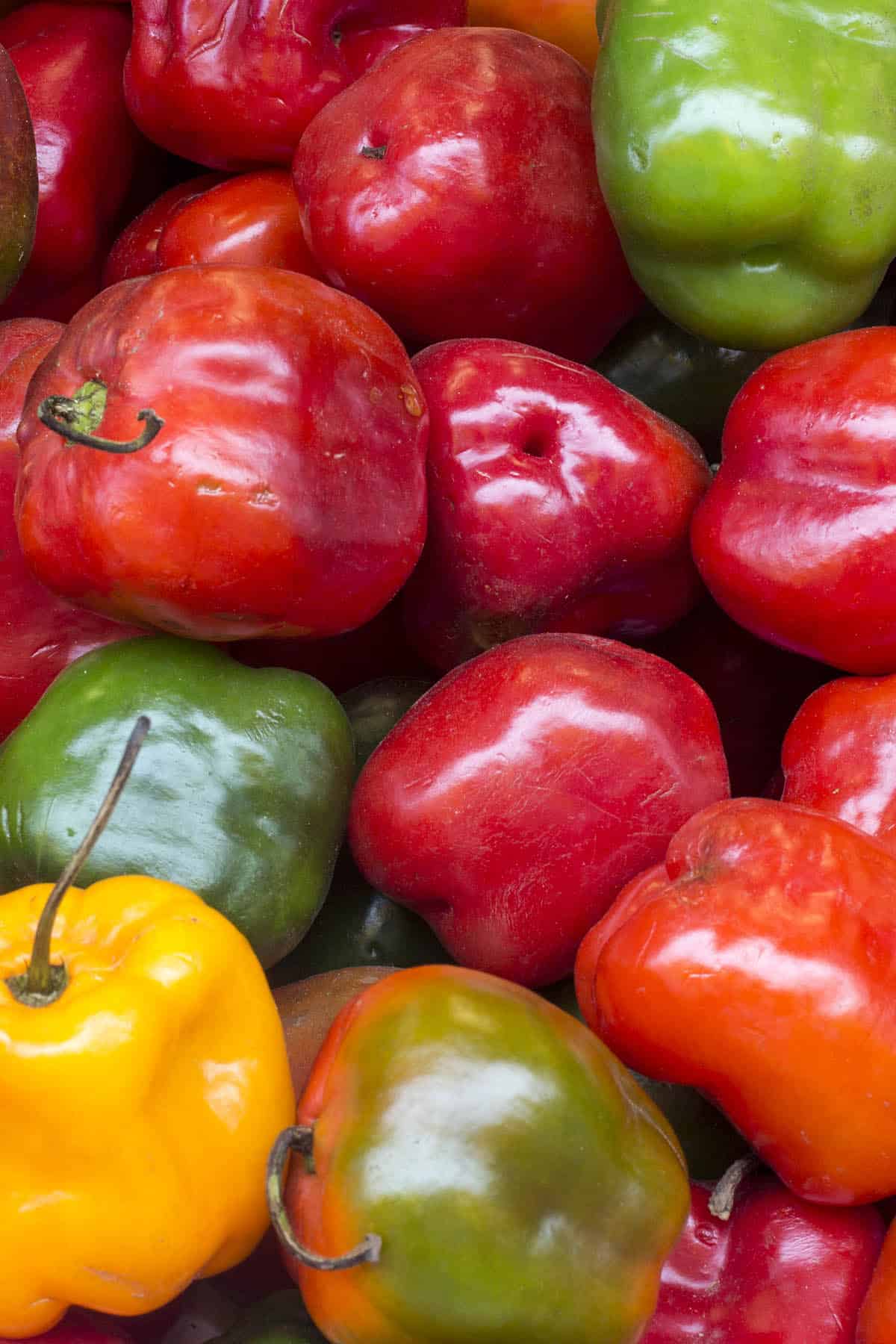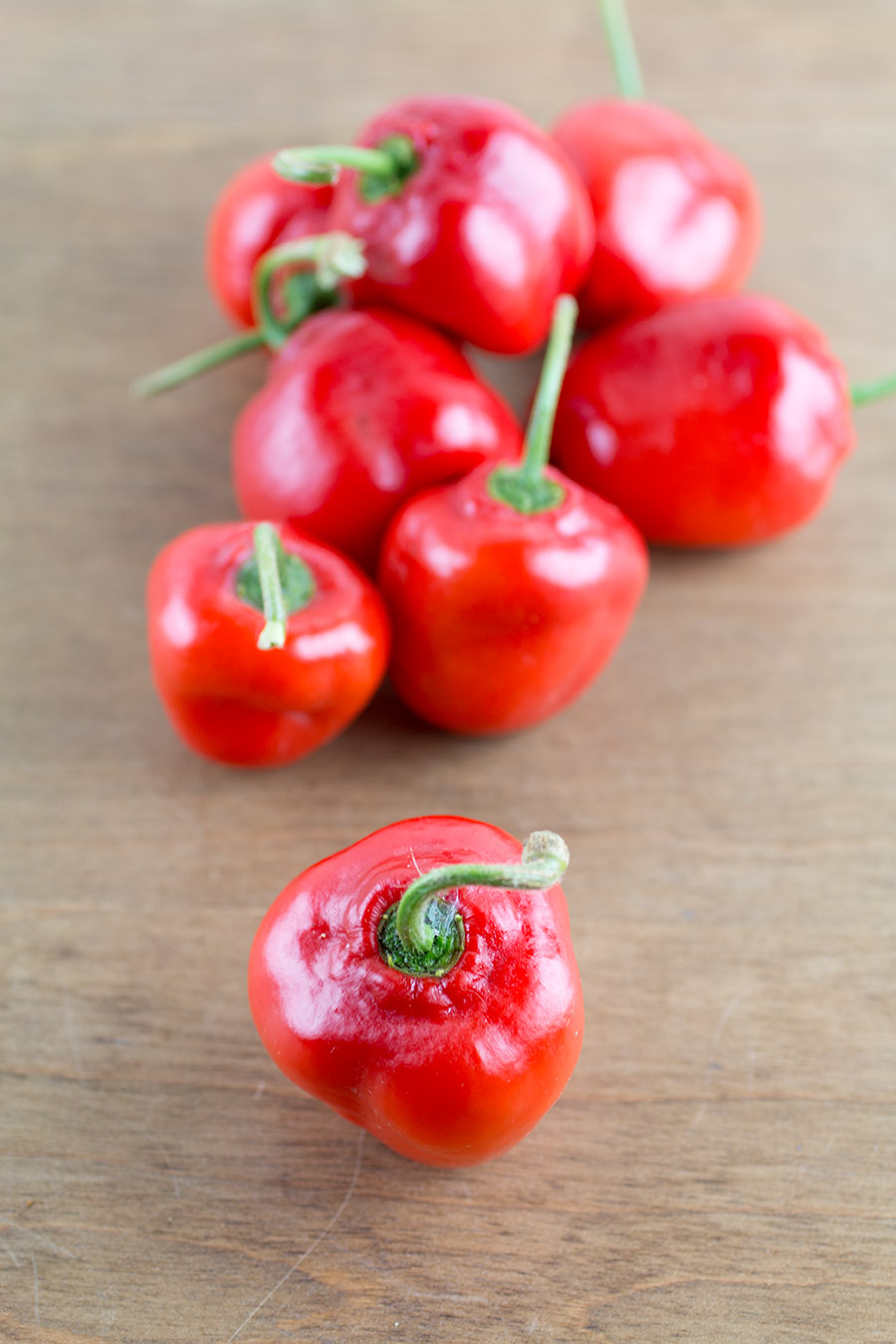Learn About These Other Medium-Hot Chili Peppers
NOTE: This recipe was updated on 8/24/21 to include new information. It was originally published on 9/27/13. The Rocoto Pepper grows in the Andes mountains from Chile to Colombia, as well as in the highlands of Central America and Mexico. It is native to Peru. It goes by many names including the “locoto pepper” widespread through South America, or as the “rocote”, or as the “caballo pepper” or “horse” in Guatemala and some parts of Mexico. It is also known in Bolivia and Peru and in Mexico as the manzano/manzana (though they are not the same pepper) or “apple pepper” in one variety resembling small apples and often used when red, or as perón or “pear pepper,” once again in Mexico and in allusion to its especially fruity or even sometimes green appearance. They are called “canario” or “canary” pepper when referring to the yellow variety, particularly in Oaxaca. They are further known as “cera” and “malinalco”, or “ciruelo”, as well as “cirhuleo” in Querétaro, a state in central Mexico. It is among the oldest of domesticated chili peppers in the Americas, and was possibly domesticated as early as 6,000 BCE; some scientists even now agree that its domesticated form is so old and prevalent that its original wild form is now totally extinct. This would put the hottest rocoto on par with a low level habanero pepper. What a nice level of heat! They are similar in heat to certain Thai peppers, or bird’s eye peppers or chiltepin peppers.
Rocoto Peppers Size and Appearance
The pepper plant’s size varies widely and can reach vine-like from a common expanse of 2 feet in the United States to a whopping in 15 feet in Bolivia, and the round or pear-shaped pods can grow from 2 to 3 inches in length. The peppers have a thick walls similar to a bell pepper, with black seeds, and can found in a variety of colors from vibrant red to yellow and orange. They also appear in hot sauces and spicy salsas, or feature as rocotos rellenos when prepared as stuffed and baked dishes including meats and cheeses. I enjoy using rocoto peppers for making ceviche, for their nice level of heat.

